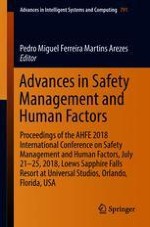2019 | OriginalPaper | Buchkapitel
Expert Elicitation Methodology in the Risk Analysis of an Industrial Machine
verfasst von : Tony Venditti, Nguyen Duy Phuong Tran, Anh Dung Ngo
Erschienen in: Advances in Safety Management and Human Factors
Aktivieren Sie unsere intelligente Suche, um passende Fachinhalte oder Patente zu finden.
Wählen Sie Textabschnitte aus um mit Künstlicher Intelligenz passenden Patente zu finden. powered by
Markieren Sie Textabschnitte, um KI-gestützt weitere passende Inhalte zu finden. powered by
